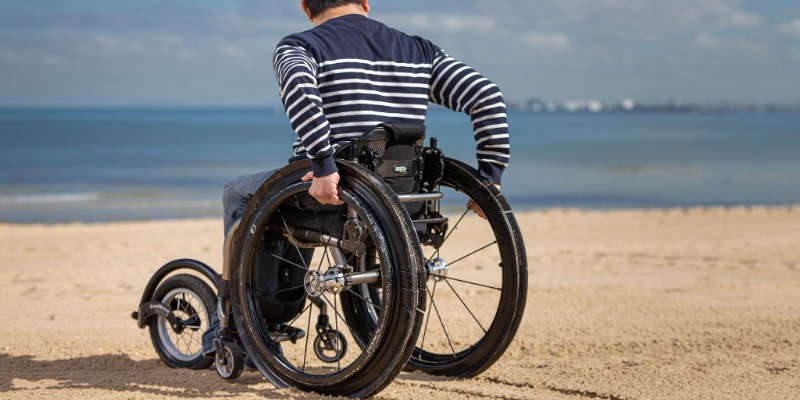Ryan Tilley and Huy Nguyen came up with an innovative idea to allow wheelchair users to access the beach and other off-road areas. Through product design, testing and product development they were able to turn their idea into a commercial success.
Hear about Gecko Traxx and their journey to commercialisation.
Gecko Traxx: IP and accessibility
Gecko Traxx's IP journey.
Gecko Traxx is created for individuals like myself to access to greater outdoors, and drawing from a lot of my personal experience of having no access to appropriate equipment, and meeting Ryan, it was the first time where we met, had collaborated and talked about it, and identifying quite a specific challenge there around just literally getting onto the beach.
Ryan:
The initial design process started with an idea and just very rough sketches, and we then took that into some basic 3D printing, and then from that we're able to create little small sections of a tire and test lots of different iterations of that and understand how that profile worked. Before then, printing lots and lots of little sections and gluing them together to create the first Gecko Traxx tire.
Huy:
For us, we seek out IP protection because of the simplicity. It's not hard to replicate, even though it's very unique. And for us it is also to protect, I guess, our identity, our branding, and very importantly, to be able to have people who, at the end of the line, have a quality product. So to not just to protect on a commercialisation perspective, but also to protect what it actually means for the person with a disability, know who's receiving it, know what it actually does, and how that impacts their life.
Ryan:
Fairly early on in the process I started seeking out some advice from mentors about what we should do around IP protection and protecting the idea. Some of the advice we got, especially considering we didn't have a lot of resources at the time, was just to file for a design registration. Retrospectively we very much talked to a lot more people and get some more perspective on it. I think it's seeking out other designers, other engineers, people who've actually gone through that themselves as a start up, because it's very different from a corporation IP protection strategy for example, where money is not an issue.
Six months later we then decided we could actually apply for a patent, and we had the resources to do that. In applying for that and engaging attorney to do that, we actually found that the design registration that we'd previously filed for come up against us as prior art. That was quite a learning experience.
If we can help my younger self or people, up and coming young designers, to not make these same mistakes and be able to have better access to information, and reliable information at that, that'd be a massive benefit. I think having good IP protection for small businesses and designers is essential in being able to commercialise a product and keep it sustainable, to stop the bigger companies and bigger corporations from taking that product, manufacturing it cheaply and undercutting those other small businesses, which often put them out of business.
Huy:
There's a lot of opportunity out there to the whole world of disability and technology. Also, it's a really needed space. There's a lot of not so great things out there, a lot of gaps, and you can be successful out of it, but at the end of that also, you have an opportunity to make the impact for people who really, really need it.
Please note: case studies are examples of the way some organisations have chosen to manage their IP. These studies don't provide advice and your experience may be different.

